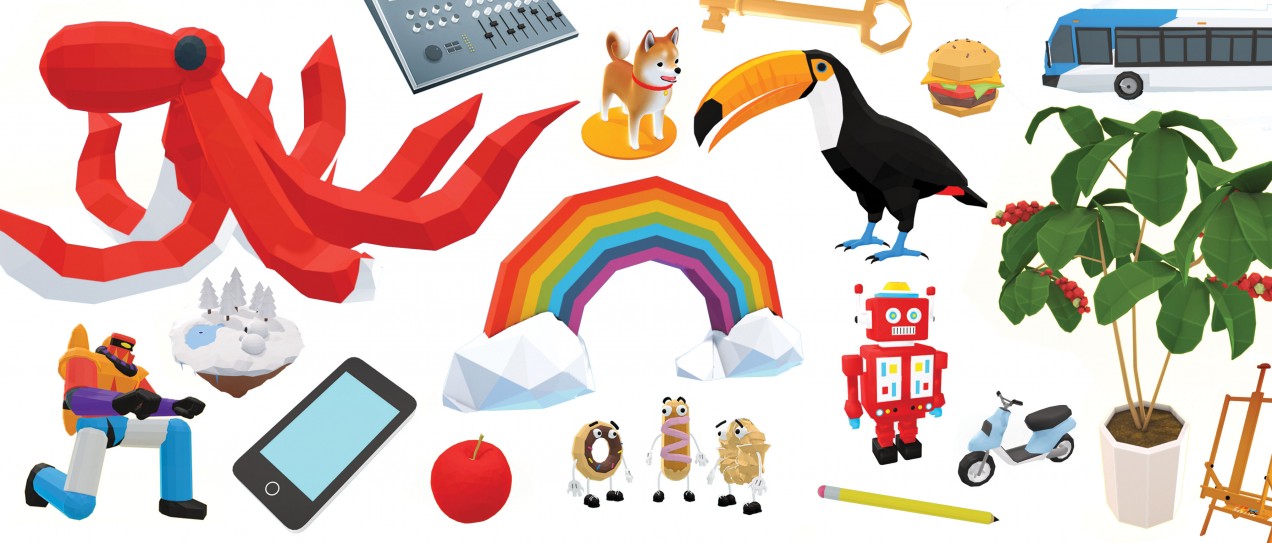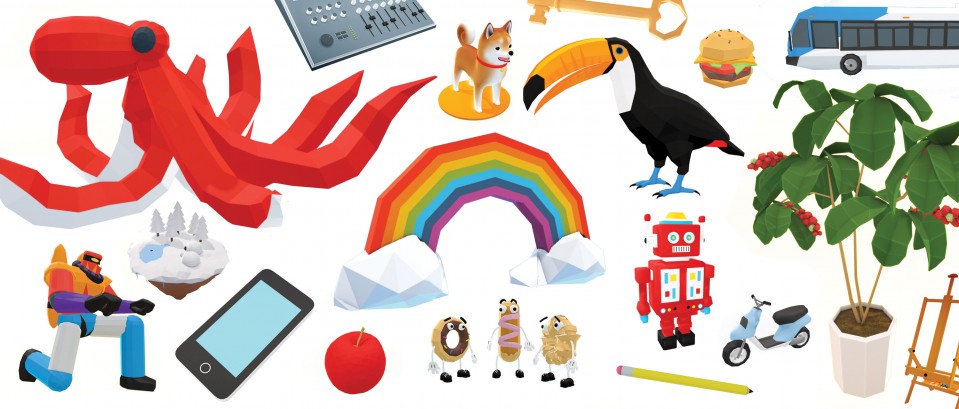

Connectivity
Apps That Hint at a Fanciful Fake Future
A new wave of mobile AR and VR apps is here, and these are the ones you need to check out.

Right now, one of the best gadgets for viewing augmented reality or virtual reality may be sitting in your pocket.
Smartphones, especially newer, higher-end models, are getting really good at blending the real and the virtual (as in AR) and transporting you to altogether new places (as in VR). They can’t yet offer the more realistic sensations delivered by headsets like Microsoft’s HoloLens or HTC’s Vive (which themselves still need a lot of work), and it’s not yet clear how useful they will be, but they can show you amazing images without draining your bank account or wiring you to a computer.
Sensing the business potential of AR, companies like Apple and Google have rolled out tools to help iOS and Android developers add augmented reality to apps in ways that look more realistic than ever before. And Google has been pioneering work in mobile virtual reality, too—first with its Cardboard, which lets you view VR content with no electronics but a smartphone, and more recently with its Daydream View headset, which works with several Android smartphones for more all-encompassing VR.
These efforts alone are leading to a lot of mobile AR and VR apps, so it’s tricky to find the ones that do a great job of showing what we can do with these media, especially as smartphones and software get better and better. The following list collects some mobile AR and VR apps that are worth checking out, no matter whether you’re an early adopter with the latest headsets at home or just curious to learn more about these technologies.
These apps weren’t chosen because they’re currently the most useful applications of AR and VR. The products are all focused on having fun. But they are worth trying because they can help you think about the potential for new AR and VR technologies and get a sense for what’s already possible.
$4, iOS
An AR puzzle game for the iPhone or iPad, Euclidean Lands has a design reminiscent of the popular Monument Valley. The game consists of increasingly complicated cube-like castles that you can twist and turn in segments, helping the red-caped male protagonist vanquish his enemies. The ways you interact with the app are intuitive and smooth: you swipe your finger across your display in the direction you want a segment of the castle to turn. And the crispness of the architecture, not to mention the hero’s flowing cape, is impressive. Less clear is how easily you’ll adjust to playing a game that takes advantage of the way Apple’s ARKit software can stick a 3-D object in one spot and keep it there while you interact with it from many different angles. To get a good look at the puzzle and figure out my strategy, for example, I often had to walk around it. I found myself peeking underneath it, too, to make sure I wasn’t missing anything. You’ll probably want to play this game in an open space.
2. Parker
$60, iOS, Android, Kindle Fire
At a glance, Parker looks like a normal teddy bear with some cute wooden accessories, but when used with the Parker app on a smartphone or tablet, it comes alive. It’s essentially an augmented-reality Tamagotchi. The app includes a number of activities that revolve around taking care of Parker. Kids can place a virtual bandage on a small cut on its tummy, give Parker an x-ray with an included bib, or, in the iOS app, craft a woodland or underwater scene with (or without) the bear and take pictures of it. What’s smart about Parker is that augmented reality is a big feature but not the whole focus of the app. There are also lots of simple on-screen activities that encourage kids to engage in imaginative play with the bear, like taking its temperature with a toy thermometer or listening to its chest with a stethoscope.
3. Figment AR
Free, iOS
The first time I tried Figment, I found myself wandering in circles in my office, inspecting a giant, mustachioed ice cream cone and laughing as it danced around in a style best described as the Macarena meets Thriller-era Michael Jackson. With the app, you can do things like add different 3-D creatures and objects to the room you’re actually sitting in—a purple dog or two, a big turkey, a bouncing rainbow—and make videos and photos to share with friends. You can place a digital picture frame with a 360° photo on your real wall, move close to the frame, and peer through your gadget’s screen to see more of the photo (the app has stock photos, or you can take your own with a 360° photo app and then add them within Figment). Figment is a fanciful showcase for virtual objects that look as if they are actually there in the room with you. And that’s great, because it gives a sense of how impressive AR can be, even on a pocket-size display.
4. Coloring VR
Free, Google Daydream View
Coloring VR, which works with Google’s Daydream View headset ($99) and a compatible phone, lets you color on a giant virtual canvas rather than a small piece of paper—a simple change that makes the activity surprisingly meditative. There are free pictures that you can color in by picking a hue from an on-screen palette and then tapping on different parts of the picture with Daydream’s handheld controller. If you want more picture options, themed packs with subjects such as underwater and outer space scenes cost $1.99 apiece. True, with Coloring VR you don’t get the freedom that comes with a higher-end 3-D VR painting app like Google’s Tilt Brush (which is so far available only for the pricey, computer-tethered Oculus Rift and HTC Vive headsets). Instead, you get a huge white virtual canvas with a black-outlined image of, say, a quaint little town that you can ink perfectly.
5. Untethered
$5 per episode, Google Daydream View
VR is a great medium for presenting mysteries that unfold slowly as users explore the world around them, and Untethered, an episodic app that starts on a stormy night in an Oregon radio station, shows this off cleverly with comic-style animation and voice interaction. In the first episode, you play a DJ who’s dealing with weird weather and an uninvited guest. As with other Daydream apps, you control Untethered with the small remote that comes with the headset—great for playing records and pressing buttons on aging station electronics. But the app also takes advantage of Google’s voice recognition technology to move the plot along via characters like a producer, who is constantly yapping at you from a speaker and asking you to do things like record on-air announcements, invite listeners to call in, and talk to callers who divulge strange stories.Untethered is slow-moving, but it illustrates neat methods of storytelling and game interaction that are still in their infancy in VR.
6. Poly
Free, Google Cardboard, Daydream View
This new website from Google is not an app, but it is a cool place to explore all kinds of 3-D objects and intricately crafted scenes made by a variety of VR and AR artists. There are thousands of things to look at, many of which were made with Google’s Tilt Brush 3-D VR drawing tool, and they range from robots to sea creatures to a lucid-dream-like ’90s bedroom. And while Poly is aimed at creators of AR and VR apps, offering them a convenient spot to share 3-D assets that others can download and use in their projects (or to snag some for their own), anyone can contribute to or download from the site. You can view Poly objects in a regular Web browser, or use a smartphone and Google Cardboard ($15) or Google’s Daydream View headset and a compatible phone to see the same things in VR.